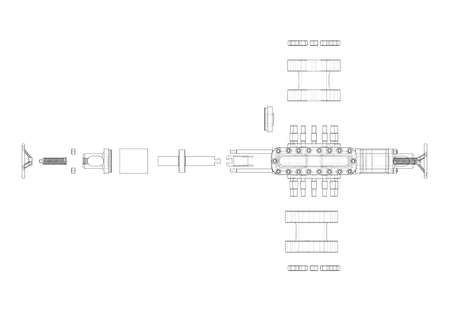Choosing the Right Enclosure
Setting up a safe and comfortable home for your tarantula or insect in the UK starts with selecting the right enclosure. It’s essential to choose an enclosure that not only meets your pet’s needs but also complies with British animal welfare standards. In the UK, enclosures should provide ample space, secure ventilation, and robust locking mechanisms to prevent escape—especially vital for exotic species like tarantulas. You’ll find a range of options in local pet shops and online retailers, including well-known British brands like Exo Terra, Komodo, and Habistat. Glass terrariums are a popular choice for their visibility and ease of cleaning, while plastic faunariums offer lightweight versatility for smaller species or juveniles. Here’s a quick comparison of common enclosure types readily available across Britain:
| Enclosure Type | Best For | Popular Brands | Available Sizes |
|---|---|---|---|
| Glass Terrarium | Tarantulas, larger insects | Exo Terra, Habistat | 30cm – 90cm wide |
| Plastic Faunarium | Juveniles, small insects | Komodo, Exo Terra | Small (1L) – Large (10L) |
| Acrylic Display Box | Display setups, smaller species | Generic/local brands | Mini (20x20cm) – Medium (40x30cm) |
When choosing an enclosure in the UK, always consider your pet’s adult size, activity level, and humidity requirements. Local pet shops often carry starter kits tailored to British weather conditions, so don’t hesitate to ask staff for advice on what best suits your new eight-legged or six-legged companion.
2. Essential Substrate and Furnishings
If you’re planning to keep tarantulas or insects in the UK, choosing the right substrate and furnishings is as crucial as picking out the perfect spot for your holiday home. Our famously unpredictable weather means your pets need a stable, comfortable environment—think of it as a mini British retreat for your eight-legged and six-legged companions!
Substrate Types: Keeping It Cosy
The foundation of any enclosure is the substrate. For tarantulas and many insects, it’s not just about aesthetics—it affects humidity, comfort, and even their natural behaviours like burrowing. Here’s a handy overview of popular substrate options suitable for the UK’s temperate climate:
| Substrate Type | Best For | Pros | Cons |
|---|---|---|---|
| Coco Fibre (Coir) | Tarantulas & Insects | Great moisture retention, mould-resistant, easy to source in the UK garden centres | Can dry out quickly if not monitored |
| Peat-Free Compost | Tarantulas (burrowers) | Natural look, good for digging, eco-friendly option | May harbour pests if not sterilised; some brands can compact easily |
| Sterilised Topsoil | Larger Insects & Tarantulas | Mimics natural habitats, retains humidity well | Needs regular changing to prevent mites/mould |
| Sphagnum Moss (as a topper) | Humidity-loving species | Keeps microclimate moist, great for tropical setups | Might encourage mould if overwatered in cool homes |
| Sand/Soil Mix | Desert species (e.g. some beetles) | Drains quickly, prevents waterlogging, replicates arid environments | Not suitable for all tarantulas or rainforest insects; can be dusty |
Decorative Elements: Bringing the Outdoors In
Your tarantula or insect enclosure shouldn’t just be practical—it should also provide interest and enrichment. Here’s where you can get creative with locally available décor that echoes the British countryside:
- Bark Hides & Logs: Oak or beech bark from reputable reptile suppliers make perfect shelters.
- Dried Leaves: Leaf litter from pesticide-free sources adds realism and hiding spots—think crunchy autumn walks!
- Cork Tubes & Flats: Lightweight, mould-resistant, and easy to rearrange during spring cleans.
- Artificial Plants: Great for adding greenery without worrying about wilting due to lack of sunlight on those gloomy days.
Top Tips for British Homes:
- Avoid using pine or cedar wood; their oils can be harmful.
- If collecting décor outdoors (like moss or sticks), always sterilise in boiling water or bake in the oven to banish unwanted hitchhikers.
- Ensure all items are secure—no one wants a midnight dash because their spider redecorated!
A Comforting Enclosure for Every Season
No matter how unpredictable the UK weather gets—be it drizzle in June or a surprise heatwave in October—the right substrate and furnishings will keep your exotic friends thriving. With a bit of thoughtful setup, your tarantula or insect will enjoy their own slice of British paradise!

3. Temperature and Humidity Control
In the UK, maintaining stable temperature and humidity in your tarantula or insect enclosure can be a real adventure—one day it’s chilly and damp, the next it’s unexpectedly warm! Here are some practical tips to help you navigate our famously unpredictable weather while keeping your eight-legged or six-legged companions comfortable and healthy.
Understanding Your Species Needs
Different species have different requirements. Before you set up your enclosure, research the ideal temperature and humidity range for your particular pet. This will be your baseline for any adjustments throughout the year.
Recommended Ranges (Common Species)
| Species | Temperature Range (°C) | Humidity (%) |
|---|---|---|
| Brachypelma hamorii (Mexican Red Knee) | 21-26 | 60-70 |
| Pogona vitticeps (Bearded Dragon) | 24-32 (with basking spot) | 30-40 |
| Pandinus imperator (Emperor Scorpion) | 23-28 | 75-85 |
| Lasius niger (Black Garden Ant) | 20-25 | 50-60 |
Essential Equipment for UK Weather
- Ceramic Heat Emitters: For those frosty British nights, ceramic heaters provide gentle warmth without drying out the air.
- Heat Mats: Ideal for creating warm zones in glass enclosures. Always use with a thermostat to avoid overheating.
- Damp Moss or Water Dishes: Increase humidity by adding sphagnum moss or shallow water dishes—just remember to refresh them regularly!
- Misting Bottles: A quick spritz helps keep humidity up, especially during dry spells caused by central heating.
- Drapes and Draft Excluders: Don’t underestimate a good old-fashioned draft excluder or thick curtain to ward off cold air from windowsills.
- Digital Thermometer & Hygrometer: Keep a close eye on conditions inside your tank with reliable digital monitors.
Year-Round Tips for Consistency
- Spring/Summer: Watch out for heatwaves—move enclosures away from direct sunlight and increase ventilation if needed. Reduce misting if humidity naturally rises with summer rain.
- Autumn/Winter: UK homes get chilly quickly! Consider insulating the back and sides of glass tanks with polystyrene sheets. Increase misting slightly if indoor heating dries the air.
- Avoid Sudden Changes: Tarantulas and insects dislike sudden shifts. Make small, gradual adjustments when tweaking heat or humidity sources.
Your Cosy British Bug Home Awaits!
No matter how wild the British weather gets outside, these tried-and-tested tips will help you create a comfortable, stable environment that both you and your exotic pets can enjoy—even when it’s raining cats, dogs, and spiders!
4. Safety and Escape Prevention
When setting up your tarantula or insect enclosure in the UK, safety and escape prevention are absolutely crucial—especially with our inquisitive British pets and perhaps even more curious children! The last thing you want is a rogue spider exploring your living room or a mantis making a dash for the kettle. Secure lids, quality locks, and reliable materials are non-negotiable for keeping both your eight-legged friends and your household safe. Below, youll find a handy table summarising the most effective options for British homes:
| Feature | Recommendation | Why Its Suitable for UK Homes |
|---|---|---|
| Enclosure Lid | Fine mesh metal or acrylic with secure clips | Prevents escapes; mesh allows airflow but deters pets like cats from pawing inside |
| Locks | Sliding latch locks or padlocks | Ideal for families with children or cheeky pets; child-proof options available |
| Materials | Toughened glass or thick acrylic | Withstands knocks from pets (or footballs indoors!) and provides clear viewing for all ages |
Its also wise to check the enclosure daily for signs of wear or tampering—cats in particular can be surprisingly persistent! For those in rented flats or listed buildings, consider enclosures with rubber feet to avoid scratches on wooden floors. Remember, keeping your mini-beasts secure not only protects them, but also keeps peace in your home when guests pop round for tea!
5. Lighting and Natural Cycles
When setting up enclosures for tarantulas and insects in the UK, lighting is often overlooked but plays a vital role in your pet’s wellbeing. Unlike reptiles, most tarantulas and many insect species do not require specialised UVB lighting; however, understanding the natural daylight cycle in Britain and how it affects your pets is essential.
Natural Daylight Cycles in the UK
The UK experiences notable seasonal variation—long days in summer and short, gloomy days in winter. Replicating these cycles helps maintain a healthy circadian rhythm for your animals. Tarantulas, for example, are typically nocturnal and thrive with a consistent day-night pattern that mirrors their natural habitats. Sudden or erratic lighting can lead to stress or irregular behaviour in both tarantulas and insects.
Recommended Lighting Practices
- Indirect natural light: Place enclosures where they receive ambient daylight, but avoid direct sunlight which can dangerously overheat the enclosure.
- LED lights: If additional lighting is needed, use low-heat LED bulbs on a timer to mimic natural sunrise and sunset times.
- Nocturnal viewing: For night-time observation, choose red or blue night-viewing bulbs, as these wavelengths are less disturbing.
Lighting Impact Comparison Table
| Lighting Type | Tarantula Response | Insect Response |
|---|---|---|
| Direct Sunlight | Can cause stress & overheating | Risk of dehydration/overheating |
| Ambient Daylight | Natural rhythm maintained | Encourages normal activity |
| Constant Artificial Light | Disrupts nocturnal patterns | Messes with moulting/breeding |
Top Tip from My Own Adventure
I once positioned my curly hair tarantula’s tank near a south-facing window—thinking she’d enjoy the view! Instead, I noticed her burrowing more than usual to escape the light. Lesson learned: indirect sunlight only!
In summary, while fancy lighting isn’t necessary, respecting the UK’s changing daylight hours and providing a regular cycle will keep your eight-legged (or six-legged!) companions happy and healthy. Simple timers and careful placement go a long way towards recreating their natural environment right here in Blighty.
6. Cleaning and Maintenance Essentials
Keeping your tarantula or insect enclosure in tip-top condition is not just about aesthetics – it’s vital for the health and happiness of your eight-legged or multi-legged companions. Here in the UK, our damp climate can encourage mould and pests, so a regular cleaning routine is essential. Local keepers recommend spot-cleaning enclosures once or twice a week to remove uneaten food, shed skins, and waste. For more thorough cleans, a monthly deep clean is ideal, especially for enclosures housing insects with higher humidity needs.
Safe Cleaning Products Readily Available in the UK
When it comes to cleaning products, always opt for pet-safe options. Many UK pet shops stock reptile-safe disinfectants such as F10 or ProRep’s Cleansafe Spray – both are highly effective against bacteria and fungi but gentle on your pets. Avoid household cleaners containing bleach or strong chemicals, as these can leave residues harmful to tarantulas and insects.
Recommended Cleaning Routine
| Task | Frequency | Recommended Product/Method |
|---|---|---|
| Spot-cleaning (removal of waste, old food) | 1-2 times per week | Tweezers, disposable gloves |
| Glass/acrylic wiping | Weekly | Damp cloth or reptile-safe spray |
| Deep clean (substrate change, decor cleaning) | Monthly or as needed | F10 or Cleansafe Spray; rinse thoroughly |
Efficient Waste Management
Dispose of organic waste (such as old substrate or uneaten insects) in your council’s garden waste bin if permitted, or compost heap if you have one – but check local guidelines first. For non-organic materials like old decorations or plastics, use standard recycling facilities where possible. Always wash hands after handling enclosures or waste to maintain good hygiene for both you and your pets.
By sticking to these locally tailored routines and using UK-approved products, you’ll ensure a safe, clean environment that supports the well-being of your tarantulas and insects all year round – rain or shine!
7. Sourcing Supplies in the UK
Setting up the perfect enclosure for your tarantula or insect companion can be a true British adventure, especially when it comes to tracking down specialist equipment. Thankfully, the UK boasts a wonderful mix of independent pet shops, high street chains, and online retailers that cater to exotic pet enthusiasts. Here’s a handy guide to help you navigate where to find everything from secure tanks to humidity gauges and décor with that local touch.
Independent British Pet Shops
Nothing beats popping into your local reptile or exotic pet shop for personalised advice and hands-on browsing. Many towns across England, Scotland, and Wales have small businesses run by passionate keepers who are happy to share their expertise and may even offer rare or custom-made enclosures. These shops often stock UK-specific brands and can be a fantastic place to pick up live plants or substrate tailored to our climate.
High Street Chains
If you prefer the convenience and consistency of well-known names, several high street pet retailers across the UK carry basic tarantula and insect supplies. While they might not have the most niche equipment, you’ll find essentials like glass tanks, thermometers, and hides at competitive prices. Here’s a quick comparison:
| Retailer | Typical Offerings |
|---|---|
| Pets at Home | Starter enclosures, food dishes, heating mats, basic décor |
| Jollyes | Glass tanks, water bowls, substrate options |
Online UK-Based Retailers
The internet opens up a whole world of choice for British keepers! Whether you’re after bioactive set-ups or specialist ventilation kits for your eight-legged explorer, there are many reputable UK-based websites offering speedy shipping nationwide. Look out for sites like Northampton Reptile Centre and The Spider Shop—both known for extensive selections and reliable delivery. Shopping online also lets you read reviews from fellow UK hobbyists before making those all-important decisions.
Online Shopping Tips
- Always check if the retailer is based in the UK for faster delivery and compliance with local animal welfare standards.
- Compare prices between platforms—sometimes eBay or Amazon UK can offer bargains on bulk supplies.
- Join British tarantula and invertebrate forums or Facebook groups; members often share discount codes or recommend trusted suppliers.
Your Local Adventure Awaits
No matter where you are in Britain—from the wilds of Cornwall to bustling London—you’re never too far from quality supplies for your tarantula or insect’s new home. Combining a bit of traditional shop-hopping with savvy online research will ensure your enclosure is both safe and stylishly suited to our unique island environment.


